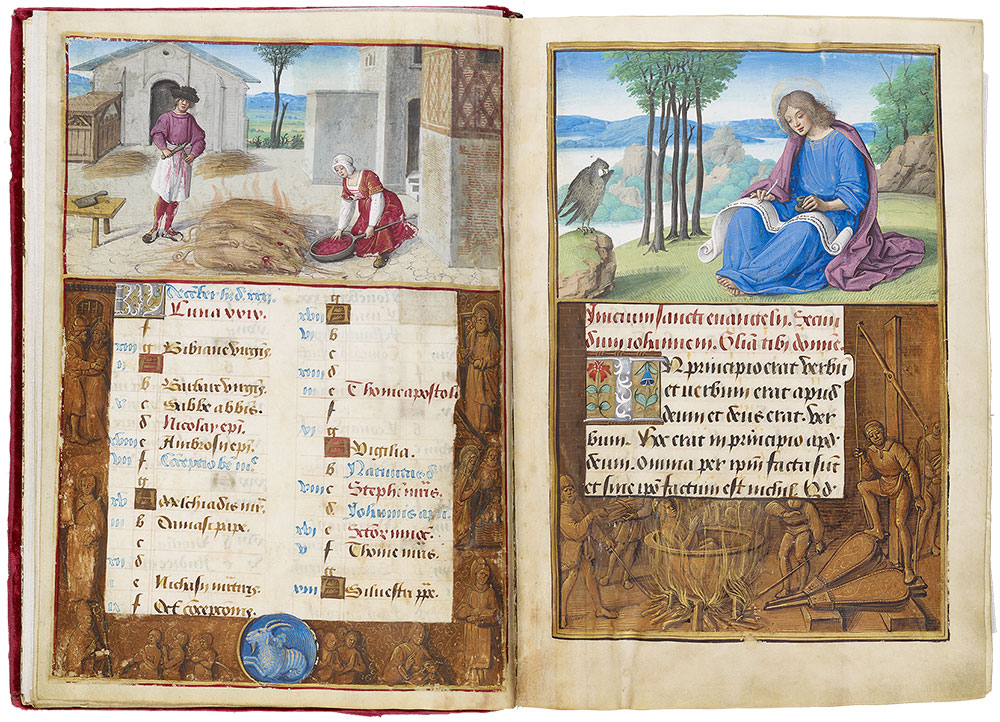
December: Roasting Slaughtered Pigs
John's Lesson: John on Patmos
Hours of Henry VIII
Illuminated by Jean Poyer
Gift of the Heineman Foundation, 1977
December: Roasting Slaughtered Pigs (fol. 6v)
In December the pigs that were fattened in November are butchered. Resting on a bed of kindling and covered with twigs, the hogs are singed prior to butchering, for which the man prepares by sharpening his knife. At the right a woman has collected the pigs' blood in a large pan.
The left margin shows the Meeting of Joachim and Anne at the Golden Gate (for the Feast of the Conception of the Virgin, December 8), Sts. Barbara, holding her tower (December 4), and Nicholas, shown resuscitating the three youths (December 6).
At the right are St. Thomas the Apostle, holding a builder's square (December 21), the Nativity (December 25), Sts. Stephen Protomartyr, with a rock on his head (December 26), John the Evangelist, blessing a cup of poison (December 27), and a group of the Holy Innocents (December 28). The zodiacal sign is Capricorn, the Goat.
John's Lesson: John on Patmos
Border: John Boiled in Oil (fol. 7)
By the beginning of the fifteenth century, four particular Gospel Lessons had become a regular feature in Books of Hours. These Lessons, which often follow the Calendar, are actually the Gospel readings from the Masses for the of the Church's major liturgical feasts.The Gospel Lessons for the Hours of Henry VIII (fols. 7–21v) are illustrated with a cycle of evangelist portraits, one placed at the beginning of each reading.
The first Lesson, from John (1:1– 14), acts as a kind of preamble for the entire Book of Hours. Its theme is humankind's need for redemption and God's willingness to provide it.
John, who writes on a scroll, does so on Patmos, the island to which he was banished by the Roman emperor Domitian (r. 81–96) and where, according to tradition, he wrote the Book of Revelation. The eagle is a symbol for John the Evangelist.
Before banishing John to Patmos, the emperor Domitian had tried to rid himself of the evangelist by boiling him to death. In the border, one man heats the fire with bellows to such a degree that his colleagues must shield their faces from the blast. John, calmly praying in the tub, remains unharmed.
The painted initial opens John's Lesson with its famous passage, In Principio erat verbu(m) (In the beginning was the Word), thus starting the Gospel's theme of Christ's Divinity.
